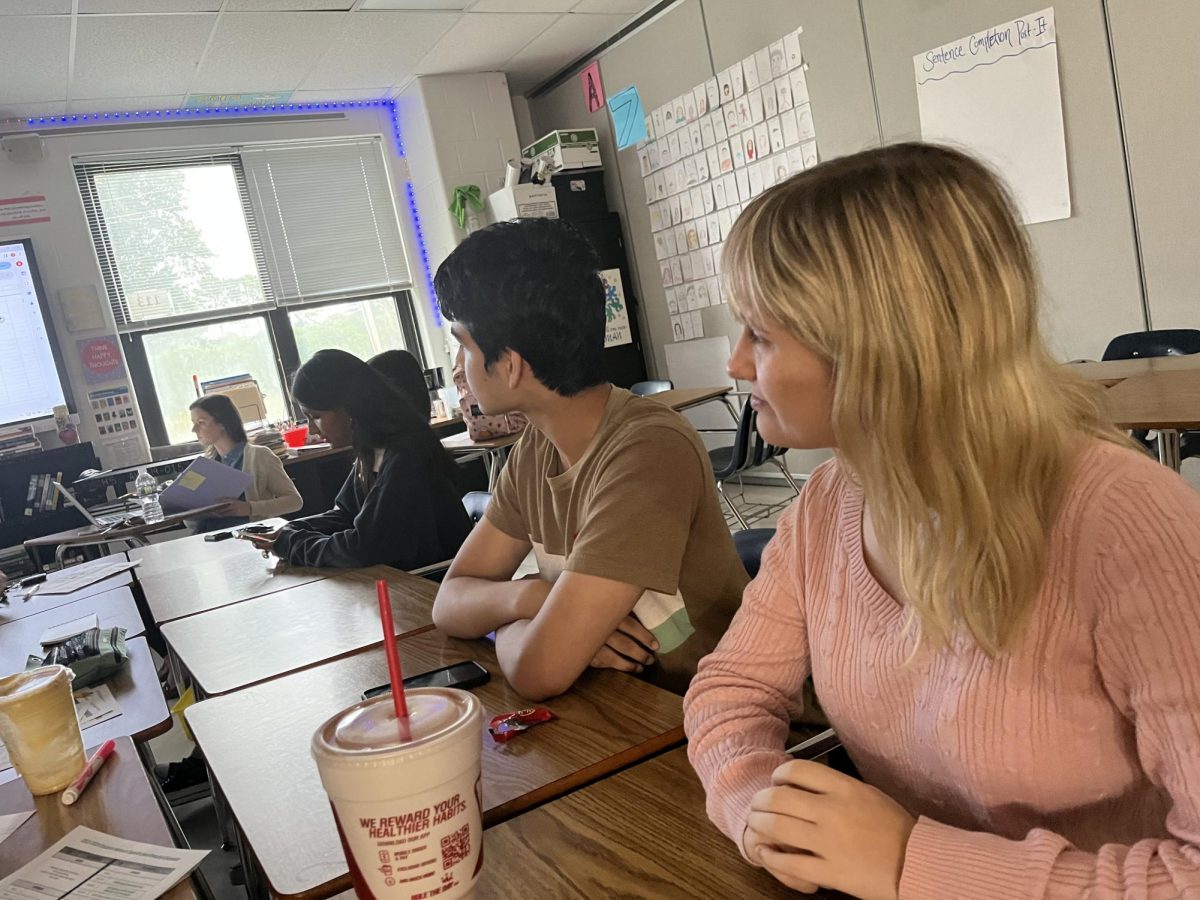 Before opening the door to her home, sophomore Meredyth Wood knows she’s going to be bombarded. They knew she was there before she arrived and as soon as she steps onto the porch, she hears an outbreak of barks. She steps in and four dogs surround her, playfully jumping and nipping at her. Meredyth and her family have fostered animals since she was 5 years old, this has become a common occurrence in her household.
Before opening the door to her home, sophomore Meredyth Wood knows she’s going to be bombarded. They knew she was there before she arrived and as soon as she steps onto the porch, she hears an outbreak of barks. She steps in and four dogs surround her, playfully jumping and nipping at her. Meredyth and her family have fostered animals since she was 5 years old, this has become a common occurrence in her household.
“Fostering is like getting a gift and then regifting it,” Meredyth said. “It’s like saying, ‘this brought me a lot of joy so now I’m going to give it to someone else.’”
The main purpose of fostering is to give animals a place to live outside of shelters until adoption. If a place can be provided for animals to stay, it helps prevent them from being euthanized and gives shelters more room for other animals. The Wood family takes in dogs of all varieties from different shelters, such as Needy Paws. They used to foster cats as well, but the family stopped when they got new mcarpet. Now they usually foster just one dog at a time in addition to the three dogs and one cat that already have a place in their family.
“We have so many animals in the house, it’s lucky none of us are allergic to them,” senior, and brother, Michael Wood said.
When Meredyth’s family introduces a dog to their home, they first allow it to get used to their family environment. It is clear to them that dogs have different personalities and they take care of their foster pets keeping this in mind, tailoring their training to fit the dog’s behavioral and personal needs. They use boundaries, limitations and trigger words to do this. Boundaries and limitations teach the dogs the rules of the house and helps the family to better understand the behaviors of the animal. Trigger words are words that teach the dog the language of behavior such as “sit,” “stay” and “no.” Training foster pets is not required, but is often done by foster families because a trained dog is more likely to get adopted.
“If they’re in a home, they’re getting taught how to be loved and how to be part of a family and it keeps them from being killed,” Meredyth’s mother Sarah Wood said.
While fostering is very rewarding it can also be very frustrating, something Meredyth knows all too well. Because of their experience they sometimes receive dogs that are aggressive and they have had their fair share of nips and bites. There are other things that they have to be accustomed to as well. Wrestling with two dogs for her bed or waking up to chewed shoes are common occurrences for Meredyth. Despite the difficulties of fostering, the Wood family plans to continue because they find it a fulfilling and worthwhile experience.
“The fact that I can get a new pet every month and new friends every month is like potato chips, you can’t just have one,” Sarah said. “It’s addicting.”
The Wood family has never been unable to get their fosters adopted. They go to many events like Bark in the Park, an annual event that brings foster pets and adopters together in an effort to get a permanent home for these pets. They make signs and bandanas for the dogs to wear that say “adopt me” and many other forms of advertisement to let others know that a new possible family member awaits them.
“I would say the most rewarding part of fostering for me is when they get adopted because then they go to their forever home,” Meredyth said.








![Ninja Christmas [Comic]](https://FHNtoday.com/wp-content/uploads/2024/12/Ninga-Christmas-Comic-1200x898.jpeg)


